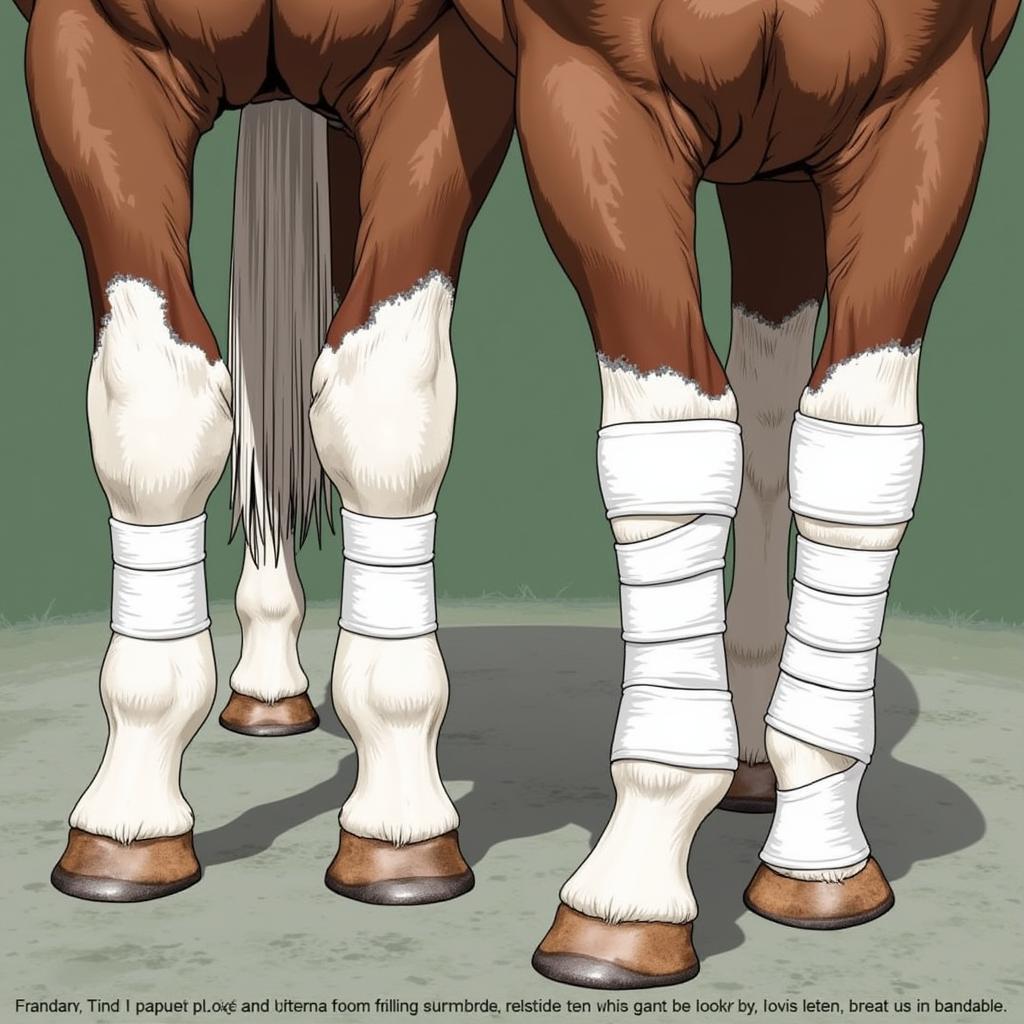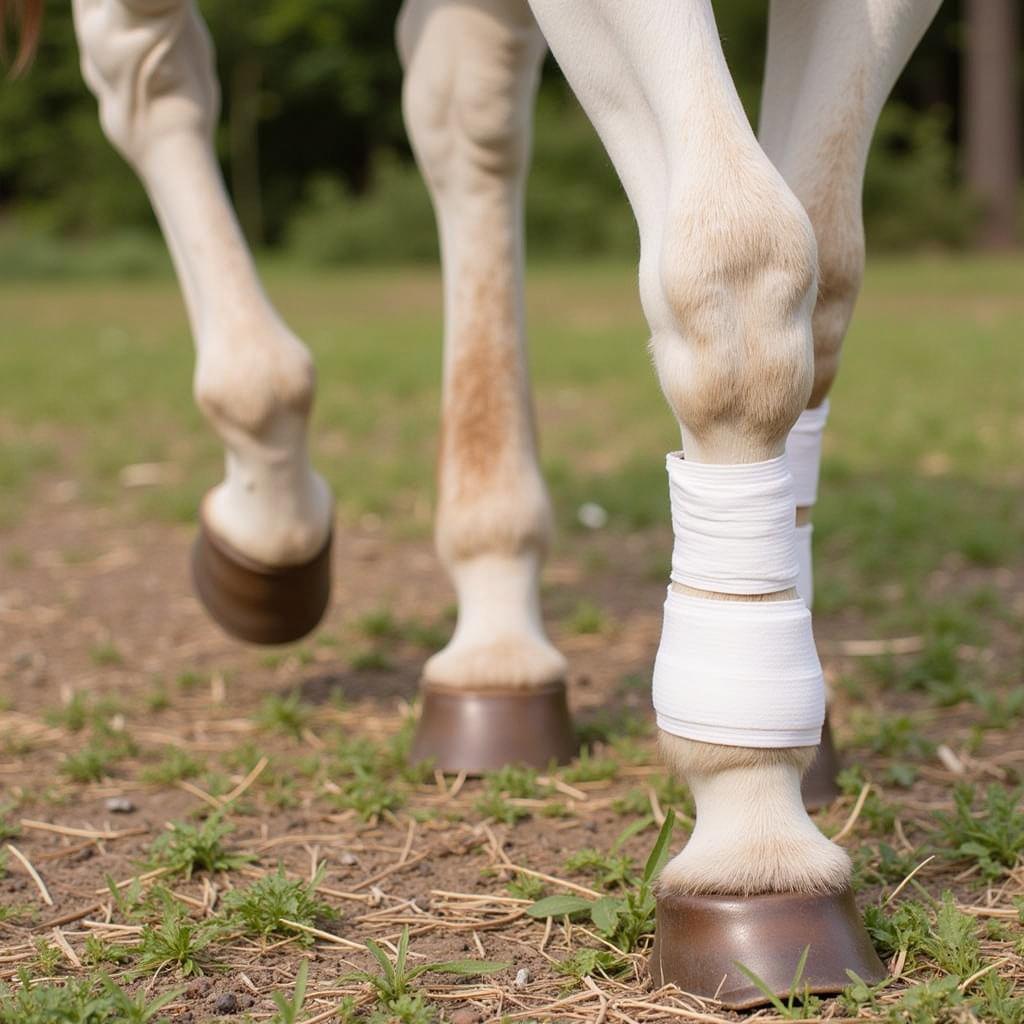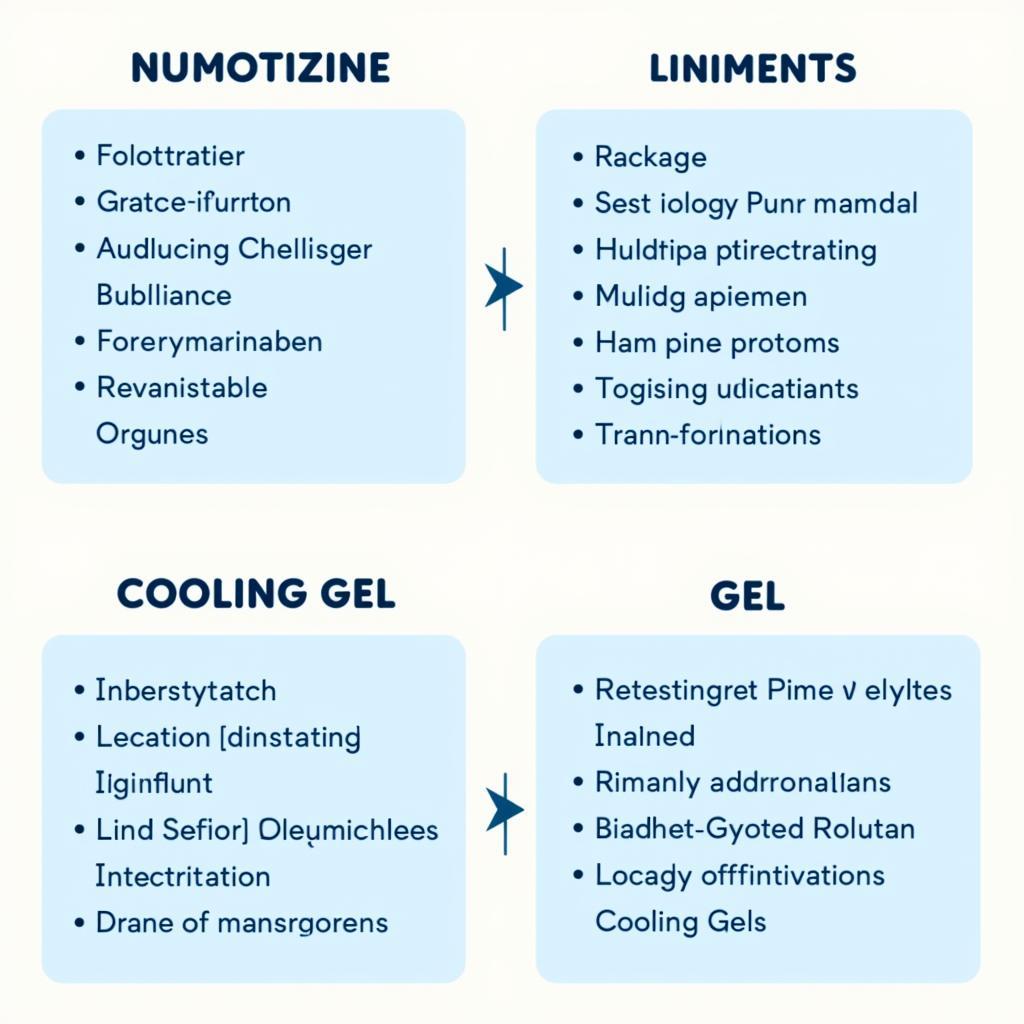Numotizine For Horses is a topical poultice often used to treat a variety of lower leg ailments. This guide will delve into the uses, benefits, and precautions associated with using Numotizine for your equine companion. We’ll explore everything from what conditions it treats to how to apply it correctly.
Understanding Numotizine: What is it and How Does it Work?
Numotizine is a black, tar-like ointment with a distinct odor. It’s primarily composed of guaiacol and beechwood creosote, which possess antiseptic and analgesic properties. When applied to the skin, Numotizine creates a mild warming sensation that helps to increase blood circulation to the affected area. This increased blood flow can help to reduce inflammation and promote healing. It’s commonly used for treating abscesses, bruises, sprains, and other soft tissue injuries in horses.
What Conditions Can Numotizine Treat in Horses?
Numotizine’s anti-inflammatory and analgesic properties make it a versatile treatment option for several common equine leg conditions. These include:
- Abscesses: Numotizine can help draw out infection and promote drainage in hoof abscesses.
- Bruises: It can reduce swelling and pain associated with bruises.
- Sprains and Strains: Numotizine can help alleviate inflammation and discomfort in strained tendons and ligaments.
- Thrush: While not a primary treatment, some horse owners use Numotizine to help soften and remove affected tissue in mild thrush cases.
- General Soreness: For mild soreness and stiffness, Numotizine can provide temporary relief.
 Applying Numotizine to a Horse's Leg
Applying Numotizine to a Horse's Leg
How to Apply Numotizine to Your Horse
Applying Numotizine correctly is crucial for its effectiveness and to avoid potential skin irritation. Follow these steps:
- Clean the Area: Thoroughly clean the affected area with warm water and mild soap. Dry completely.
- Apply Numotizine: Apply a thick, even layer of Numotizine directly to the skin.
- Cover the Area: Cover the Numotizine with a clean bandage or wrap. This helps to keep the poultice in place and prevent it from rubbing off.
- Change the Bandage: Change the bandage and reapply Numotizine every 12-24 hours, or as directed by your veterinarian.
Precautions and Potential Side Effects
While generally safe, Numotizine can cause skin irritation in some horses. Always test a small area first before applying it to a larger area. If you notice any signs of irritation, such as redness, swelling, or excessive itching, discontinue use and consult your veterinarian.
 Horse Leg Bandaged with Numotizine
Horse Leg Bandaged with Numotizine
When to Consult Your Veterinarian
While Numotizine can be an effective treatment for minor leg ailments, it’s essential to consult your veterinarian if:
- The condition doesn’t improve within a few days.
- The condition worsens.
- Your horse exhibits signs of pain or discomfort.
- You suspect a more serious underlying condition.
“Numotizine can be a helpful tool in managing minor leg issues in horses,” says Dr. Emily Carter, DVM, Equine Sports Medicine Specialist. “However, it’s crucial to use it correctly and to consult with your veterinarian for a proper diagnosis and treatment plan.”
Numotizine vs. Other Topical Treatments
Numotizine differs from other topical treatments like liniments and cooling gels in its mechanism of action. While liniments and cooling gels primarily provide temporary pain relief through cooling or counter-irritant effects, Numotizine aims to reduce inflammation and promote healing through increased blood circulation.
 Comparing Equine Leg Treatments
Comparing Equine Leg Treatments
Conclusion
Numotizine can be a valuable tool in your horse’s first-aid kit for managing minor leg injuries. Understanding its proper application and potential side effects is crucial for safe and effective use. Remember, always consult your veterinarian for any persistent or worsening conditions to ensure your horse receives the best possible care. Numotizine is just one part of a comprehensive approach to equine health.
FAQ
- How long can I leave Numotizine on my horse? Typically, Numotizine should be changed every 12-24 hours.
- Can I use Numotizine on open wounds? No, Numotizine is generally not recommended for open wounds.
- Does Numotizine stain? Yes, Numotizine can stain clothing and bandages.
- Where can I purchase Numotizine? You can purchase Numotizine from most feed stores, tack shops, and online retailers.
- Is Numotizine safe for all horses? While generally safe, some horses may experience skin sensitivity.
For further assistance, please contact us at Phone Number: 0772127271, Email: [email protected] Or visit our address: QGM2+WX2, Vị Trung, Vị Thuỷ, Hậu Giang, Việt Nam. We have a 24/7 customer service team.